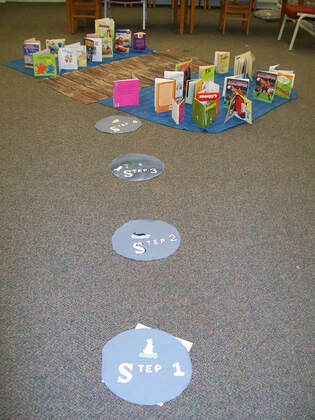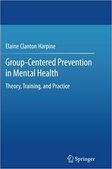We must also understand that simply sending children back into the classroom will not guarantee that children learn or receive an education. The Nation's Report Card stated that approximately 65% of 4th graders could not read at the 4th grade level by the end of 4th grade in 2019. That failure existed in the classroom before the coronavirus. This should tell us that there's something wrong with the teaching methods that we are using in the classroom.
Regardless whether students are receiving in-class instruction or online instruction, one of the main problems blocking education is lack of motivation or incorrect use of motivation. This is particularly true in reading. The way motivation is used in the classroom is a main reason that reading scores were worse in 2019.
Motivation is connected to everything we do, but, for this discussion, I will limit our exploration of motivation to education. Motivation is the process that guides our actions. Explains why students behave as they do. Motivation helps us get started, directs how we act, and determines how long we work on a project or assignment. Does this imply that anything and everything we do in the classroom to create motivation will work? No. It also does not mean that all forms of motivation are positive for students. Compliance is not the same as motivation. Although people often act out of fear, we do not want to motivate children by fear in the classroom.
What is the difference between intrinsic and extrinsic motivation?
Intrinsic motivation is the internal desire to explore and to learn. Extrinsic motivation involves completing an activity to receive a reward or to avoid some type of punishment. Intrinsic motivation increases persistence and willingness to work on an assignment for a longer period of time. Extrinsic motivation has a very short-term effect, encourages procrastination, and leads to negative thought. Intrinsic motivation produces more originality, better performance, higher test scores, increased creativity, and more complex thought and application. Intrinsic motivation encourages doing an activity because it is interesting and satisfying. Extrinsic rewards or prizes, when used in the classroom, reduce intrinsic motivation and the natural desire to learn. The learning environment in a classroom can also affect intrinsic motivation. If there is a predominantly negative environment in the classroom or too much pressure, competition, or control, then intrinsic motivation suffers. Competition and conflict destroy intrinsic motivation. Merely praising a student is not a form of intrinsic motivation.
So, how should we use motivation in the classroom?
In the classroom, most teachers use extrinsic motivation, but extrinsic motivation has been proven to be ineffective. As far back as 1973, researchers demonstrated the negative effects of extrinsic motivation in the classroom. In one such study, three and five year-olds were asked to draw a picture. One group was offered a reward for the best drawings. The other group was not offered any kind of reward, just the opportunity to draw. Both groups drew pictures. Then the researchers returned to the groups and ask them to draw a second set of pictures. For the second round, no rewards were offered. The children who had been offered a reward in the first round were not interested in drawing another picture for the second round. Why? Because they were not offered another prize. The children were drawing to receive a reward not for the pleasure of drawing. Extrinsic rewards reduced the children's natural desire to draw a picture. No reward, no picture.
Research has shown intrinsic motivation to be much more effective in the classroom than extrinsic motivation. Intrinsic motivation can be more effective than extrinsic for helping students to increase their performance, test scores, and their desire to complete an assignment. A study from Harvard found that “when students feel a sense of belonging, they experience more meaningful relationships, higher self-esteem, better academic performance, and improved well-being.”

The rocket project uses a hands-on teaching approach. The hands-on project combines learning (teaching the short ă vowel sound) and counseling (rebuilding self-efficacy, creating a motivational environment where students tackle challenging learning tasks, and helping students develop completion skills). The excitement of completing the rocket encourages even reluctant students to push a little harder to finish a challenging task. Everyone, naturally, wants to see their rocket soar through the air.
One young student was sent to my Reading Orienteering Club after-school program because he was failing in reading. He never did his homework, scribbled all over his worksheets in class, and rarely finished his in-class assignments— instead, he put his head down and slept. He repeatedly caused other inappropriate behaviors in the classroom. The list was long. Yet, he said to me, “Can't I finish? My dad's not here yet. I know I can finish. Please.” The student was pleading for extra time to finish his rocket, to finish capturing 10 more words. I never offer shortcuts. He had to complete all four steps for all 10 words that he captured. He knew this, and he was still motivated to do the work. See what a difference changing the teaching method can make?
 Build hands-on projects in stages. Let the motivation build as you teach.
Build hands-on projects in stages. Let the motivation build as you teach. First, making a rocket is not a reward. Every single student makes a rocket, even if they’ve misbehaved in class. Making a rocket is the assignment, not the reward. The students do not need to earn points or complete any other assignments in order to be able to make a rocket. They simply walk in and begin making a rocket. The rocket is the teaching tool being used to teach students new words.
 Use progressive steps to help children work at their reading level.
Use progressive steps to help children work at their reading level. Creating a positive group-centered motivational environment. It is not really possible to motivate another person. A teacher cannot motivate a student, but you can create a motivational environment. It is this motivational environment that allows and encourages students to motivate themselves. The rocket project is exciting. Students work together and help one another. Yet, students know that they must finish their project before they launch their rockets. Rockets that are not finished on time simply go on a table marked “to be finished.” They finish their projects later when time allows. Unfinished projects do not go home; the ROC is not an arts and craft program. It is a teaching program
Should students be allowed to choose their assignments?
Giving students the freedom to choose does not mean that students choose which assignment to work on or if they want to do an assignment or not. Allowing students a choice merely allows students to fine -tune an assignment to suit their own personal interests.
Students struggling in reading need intrinsic motivation. Create an intrinsically motivational environment by building an element of choice into your classroom. Allowing a student to choose which book to read or the topic for their writing assignment does not reduce the quality of the learning experience. The assignment is the same; you’ve just increased intrinsic motivation, the attention and willingness of the student to work, and thereby the depth of what is learned by allowing the student to choose, become involved with the learning task.
I offer a reading cart. Yes, I have selected the books on the cart, but I try to offer a wide selection. No, I do not allow students to read comic books in place of a novel nor do I include books from popular movies. I want books that the students have not read before or seen on TV.
Can intrinsic motivation be incorporated into a regular classroom?
It certainly can and should be each and every school day. Here is an excellent example of intrinsic motivation at work in the classroom. I volunteered to help one 3rd grade teacher several years ago. She was teaching 3rd graders how to write a paragraph. She had the entire class of 22 students write a research report using the alphabet. The students were to write on a topic of their choice. Most of the students chose animals. Therefore, they wrote a paragraph for each letter in the alphabet that described a different animal—A for anteater and such. The teacher chose the assignment and the requirements of the assignment, but students were allowed to choose the topic they would write about. One student wrote about airplanes and had a difficult but fun time finding an airplane for each letter of the alphabet. Another student wrote about whales. No, there is not a type of whale whose name begins with X. This was part of the fun. Each student had to search and find an animal, airplane, or explanation to fit each letter of the alphabet. Then, they wrote a paragraph that fit all of the requirements of the assignment. The finished pages, complete with pictures, were bound together with yarn and made into a very inexpensive book. The room was literally buzzing every day when it was time to work on the books. Students were also able to work at their own individual skill level. The more advanced students naturally wrote more complicated paragraphs in their books, but each student wrote a book. Not one single student refused to write. Everyone wanted to write a book. No, class time was not wasted. Students practiced writing paragraphs with grammatically correct sentences, using punctuation correctly, spelling, making use of research skills, reading, comprehension, and completing a project that stretched over several weeks’ time—persistence. Almost every language arts skill that third graders needed to learn was incorporated into this one lesson.
Can intrinsic motivation be incorporated into online or distance learning?
Yes, definitely. A positive, intrinsically motivating work environment can be created for online classes, especially if you have face-to-face time with the student. Groups can also generate an intrinsically motivating environment by how you set up and work with the students in your group. Offering choices is one suggestion that works very well with online teaching. For example, I was working with a student today. The student had a writing assignment. I let the student choose the topic. The assignment told the student exactly what they had to do to complete the writing assignment. By allowing the student to choose the topic, I made the assignment more intrinsically motivating. The student worked much harder than if I had given the student a specific topic. Confidence also increases when we emphasize intrinsic motivation. Students are even more competent; they want to do their best.
 For more about intrinsic motivation, see Chapter 6 in Group-Centered Prevention and Mental Health: Theory, Training, and Practice
For more about intrinsic motivation, see Chapter 6 in Group-Centered Prevention and Mental Health: Theory, Training, and Practice - Build a motivational learning environment in your classroom. Design classroom assignments to incorporate topics that students are interested in. This does not need to change the requirements of an assignment. Offer choices, as with the 3rd grade class example above. Remember, you cannot motivate a student, but you can help them motivate themselves.
- Make sure your classroom assignments are positive, absolutely no competitions. Competition and conflict destroy intrinsic motivation.
Help students rebuild self-efficacy. Self-efficacy is not the same as self-esteem. Self-esteem means I feel good about what I'm doing. I can feel good about getting in trouble. A student getting in trouble for misbehavior may in fact have a very high positive self -esteem. Some students delight in causing trouble in the classroom. Self-efficacy, on the other hand, is having the confidence to know that you can work a math problem, read out loud when requested, or knowing that you can write a paragraph when asked to in class. Self-efficacy requires skill building. Students who lack skills will not be intrinsically motivated, even if you offer choices or have a positive classroom atmosphere.
Reduce negativity in the classroom. Control teasing, bullying, and making fun of other students in any form or fashion. Intrinsic motivation is not possible in a negative classroom.
Design intrinsic motivational strategies that help students change poor behavior or poor academic results. Use a method that will help students learn to read rather than one that has failed, such as the rocket building activity described above.
Teach critical thinking. Critical thinking enables children to analyze why something worked or why it did not. By analyzing the success or failure of their actions, students will develop a more positive approach to learning.
Remove memorization from the classroom. Memorization becomes boring; boredom keeps students from learning. It is also not an effective teaching method.
Be creative. Do not use worksheets.
Whenever possible, allow choices. Allow your students to choose writing topics or books to read. As mentioned earlier, you may provide a selection of topics to choose from or you may supply a collection of books to choose from. Choosing from a designated group still allows children to have a sense of control and choice.
Incorporate hands-on learning projects whenever possible. Do not just sit down and learn a list of spelling words. Turn a list of spelling words into a hands-on project—a rocket or a puppet.
How can I increase intrinsic motivation with online instruction?
Each of these 10 ideas mentioned above can be transferred to online instruction. Yes, they really can. The difference is that you are creating a special kind of environment when you teach online. You are not in the same room with the student; therefore, you must build a connection between you and the student. You must create a positive learning atmosphere online. I'll devote a later blog to talking about how to create intrinsically motivating learning environments online. It is possible, but it is different than working in a classroom.
 RSS Feed
RSS Feed
